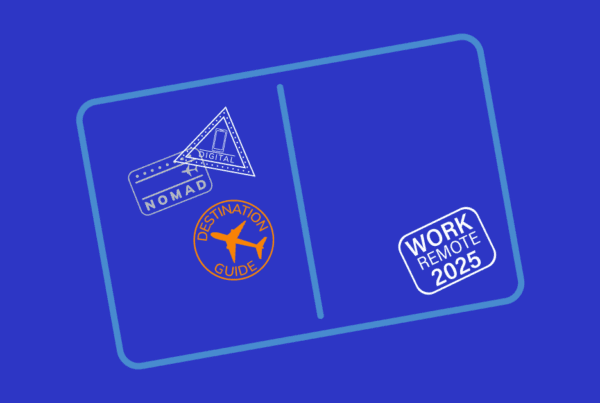
If you’ve been living under a rock for the last few months, you may not have heard the news about the wide-sweeping layoffs. Downsizing has happened even across industries previously thought of as flourishing or stable. As a result, many of those affected by the term-du-jour “employee headcount reductions” have started to consider working flexibly as contractors and navigating from full-time to freelance.
The Workplace and Mindsets Are Shifting
Shifting mindsets toward freelance is not, however, a new idea. Employees have been leaving cubicles in favor of becoming flexible talent for years. Therefore, the number of freelancers in the United States has been steadily increasing since 2014. The favorability of the career continues to shift as well. Over 70% of tech companies utilize “blended teams” that include flexible talent workers alongside their core on-site and remote teams. Even the self-evaluation of flexible talent is improving. In a recent survey, nearly three-quarters of all freelancers (73%) now claim that perceptions of freelancing are becoming more positive.
Over the last few years, the world of work has undergone significant changes, and the recessionary mindset of 2023, on the heels of the COVID-19 pandemic, has only amplified this transformation. In response to the uncertain economic landscape, many businesses have tightened their budgets and reduced employee headcount to prevent closing their doors. As a result, layoffs and downsizing have become a harsh reality for many workers. However, this shift in the job market has also opened up new opportunities for individuals to work on their own terms and embrace a contract-employment lifestyle as flexible talent.
Flexible Talent Model
The flexible talent model, where individuals offer their skills and services as freelancers, has become an increasingly popular alternative to full-time employment. To gain insights on making a smooth transition from an employee to a contract worker, one must explore the journey from full-time to flexible talent and learn to navigate that shift successfully.
Why Consider a Career as Flexible Talent?
The traditional 9-to-5 work model is becoming a thing of the past. The rise of remote work, technological advancements, and the growth of the gig economy have made it possible for individuals to work in a way that suits their needs and lifestyles. The flexible talent model offers numerous benefits, including:
- Flexibility
One of the biggest draws of contract talent work is the flexibility it offers. Freelancers have the ability to work from anywhere, at any time, and on their own schedule. Because of this flexibility, becoming flexible talent can be especially appealing for those with families, as it allows for a better work-life balance and more control over their time. - Control Over Your Career
When you work as a flexible talent, you have exponentially greater control over your career. Freelancers choose the projects they work on, the clients they work with, and their pay rate. This increased control often leads to a greater sense of satisfaction and purpose in your work, as you are in charge of your career path. - Increased Earning Potential
The old saying, “work to live, don’t live to work,” has become the mantra of the successful freelancer. The earning potential for flexible talent can be higher than that of full-time employment. Freelancers can charge more for services and work as much or as little as they want or need. By removing the status quo from workweek expectations, flexible talent can work without the constraints of a set corporate schedule or predetermined salary. Additionally, they can take on multiple clients at once, increasing overall income and earning potential.
Making the Transition to Flexible Talent Work
Transitioning from full-time employment to flexible talent work can be challenging, but it is possible. Here are some steps you can take to make the journey as smooth and successful as possible:
- Assess Your Skills & Experience
Before you start looking for flexible talent work, take a step back and assess your skills and experience. What do you have to offer as flexible talent? What are your areas of expertise? What are your unique selling points? Understanding your strengths, weaknesses, and differentiators will help you identify the types of projects and clients you should target. - Build Your Network
Networking is vital when it comes to finding flexible talent work. Connect with other freelancers in your field or complementary fields, attend relevant events and workshops, and join online communities. You never know where your next opportunity may come from, so building relationships and establishing a solid network of contacts is essential. - Create a Strong Portfolio
Your portfolio is your calling card as flexible talent. Make sure it showcases your skills and experience in the best possible light. Include examples of your work, client testimonials, and a description of your services. Your portfolio should accurately reflect your brand and skillset. Be sure to update it regularly and showcase your latest work. - Set Your Rates
Setting your rates as flexible talent can be challenging, but it is important to establish a rate that is both competitive and reflective of your skills and experience. Do some research. Find out what other freelancers in your field are charging. Predict your expenses. Determine your desired salary. Consider what tools you’ll need to be successful, both hardware and software. Use your findings to help establish the rate you’ll charge. Be confident in your rates and know your value. Don’t do work for free, but don’t hesitate to negotiate if necessary. - Market Yourself Effectively
As a freelancer, you will wear many hats, including being your own marketing department. Take the time to develop a marketing strategy that showcases your skills and services to the right audience. Utilize social media, create a website, and reach out to potential clients directly. Be proactive in promoting yourself and your services. If marketing and branding aren’t your strongest attributes, consider hiring another freelancer to assist you in establishing your brand and collaborating to create your marketing strategy and collateral. - Be Organized
Flexible talent work requires a high level of organization and self-discipline. Make sure you have a system in place to keep track of your projects, deadlines, and finances. A clear understanding of your workload and schedule will help you stay on track and ensure that you deliver quality work to your clients. Look into project-tracking tools and time-tracking software if you need assistance. Consider joining a freelance marketplace or gig-work site with built-in organizational tools to elevate your process. - Stay Updated on Industry Trends
Staying informed and up-to-date on industry trends and advancements is crucial for the success of your flexible talent career. Attend events, join online communities, and invest in training and education to continuously improve your skills and knowledge.
Tips for Success as Flexible Talent
- Build a Strong Reputation
As flexible talent, your reputation is everything. Deliver quality work, meet deadlines, and communicate effectively with your clients. Word-of-mouth referrals are a powerful tool, and a strong reputation will help you attract new clients and opportunities. - Set Boundaries
Flexible talent work can be demanding, and it can be easy to get caught up in the hustle and forget to take care of yourself. Set boundaries and make sure you are taking breaks, unplugging from work, and engaging in activities outside of work. - Invest In Yourself
As flexible talent, you are responsible for your own success. Invest in your skills, knowledge, and equipment to stay competitive and deliver quality work to your clients. - Maintain a Work-Life Balance
Maintaining a work-life balance can be challenging when working as flexible talent. Set aside dedicated work hours and make sure you are taking time to recharge. Certainly, a healthy work-life balance will benefit you, but it will also benefit your clients and the quality of your work. - Don’t Be Afraid To Seek Help
The journey from full-time employment to flexible talent work can be overwhelming, and it’s okay to seek help and support. Reach out to other freelancers, join online communities, or work with a mentor to help you navigate the transition and succeed in your new career.
In conclusion, the journey from full-time employment to flexible talent work can be challenging, but it can also be gratifying. Embracing the flexible talent lifestyle allows individuals to work on their own terms, build their careers, and achieve financial stability. With the right mindset, preparation, and determination, anyone can make the transition to a successful and fulfilling flexible talent career.
Chris is the President & COO of FlexTal. He brings 20+ years of experience in Customer Success, UI/UX, design, and marketing – including time within start-ups, agencies, and enterprise orgs. Chris has also served as a University adjunct professor in Advertising & Public Relations for several years.



